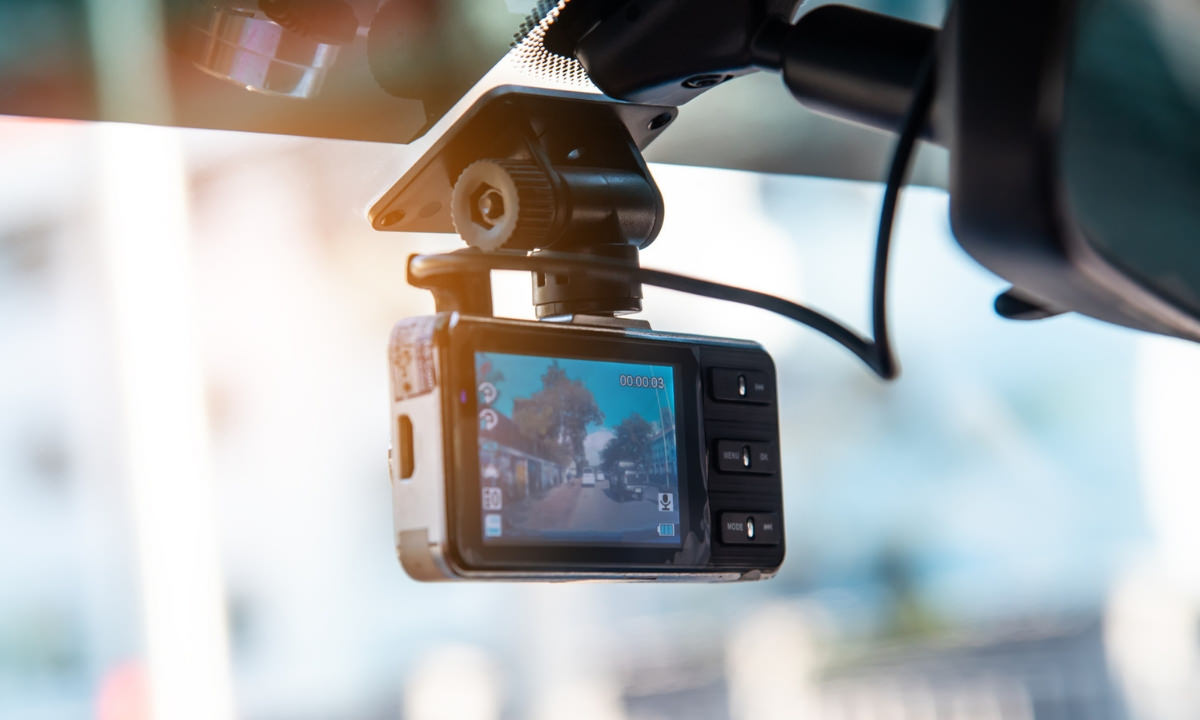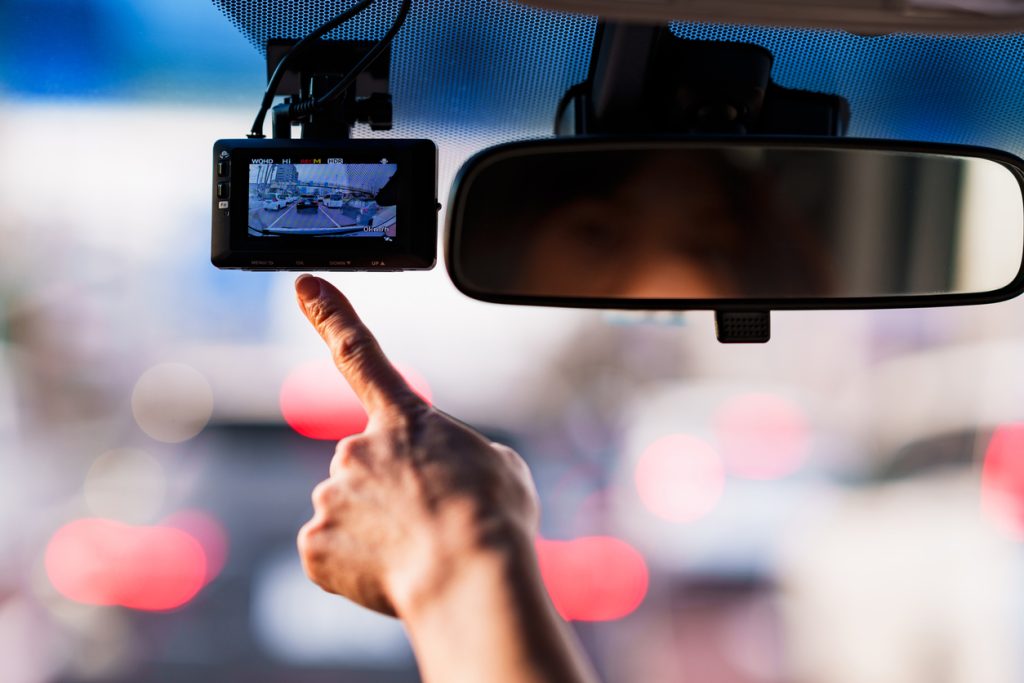-
Table of Contents
“Stay in the know with a dashcam – track your vehicle with ease!”
Introduction
Dashcams are becoming increasingly popular as a way to monitor and record activity while driving. They are often used to capture footage of accidents or other incidents on the road, but can they also be used to track a vehicle? The answer is yes, dashcams can be used to track a vehicle, but there are some important considerations to keep in mind. In this article, we will discuss how dashcams can be used to track a vehicle, the benefits of doing so, and the potential drawbacks. We will also provide some tips on how to get the most out of your dashcam when using it to track your vehicle.
How Dashcams Can Help Track Your Vehicle
Dashcams are becoming increasingly popular as a way to track and monitor vehicles. Dashcams are small cameras that are mounted on the dashboard of a vehicle and record video footage of the road ahead. They can be used to monitor the driver’s behavior, record accidents, and provide evidence in the event of a dispute.
Dashcams can be used to track a vehicle’s location and movements. By connecting the dashcam to a GPS system, the vehicle’s location can be tracked in real-time. This can be useful for fleet management, as it allows fleet managers to monitor the location of their vehicles and ensure that they are being used in accordance with company policies.
Dashcams can also be used to monitor driver behavior. By recording video footage of the road ahead, dashcams can detect dangerous driving behaviors such as speeding, tailgating, and distracted driving. This can help fleet managers identify and address any issues with driver behavior before they become a problem.
Dashcams can also be used to provide evidence in the event of an accident. By recording video footage of the incident, dashcams can provide valuable evidence that can be used to determine who is at fault. This can help to reduce the time and cost associated with resolving disputes.
In summary, dashcams can be a valuable tool for tracking and monitoring vehicles. They can be used to track a vehicle’s location, monitor driver behavior, and provide evidence in the event of an accident. Dashcams can help fleet managers ensure that their vehicles are being used safely and efficiently.
The Benefits of Using a Dashcam to Track Your Vehicle

Dashcams are becoming increasingly popular as a way to track and monitor vehicles. Dashcams are small cameras that are mounted on the dashboard of a vehicle and record video footage of the road ahead. They are a great way to keep an eye on your vehicle and its surroundings, and can provide a wealth of benefits.
One of the main benefits of using a dashcam is that it can provide evidence in the event of an accident. Dashcam footage can be used to prove who was at fault in a collision, and can be used to support insurance claims. This can be especially useful if the other driver is not willing to accept responsibility for the accident.
Dashcams can also be used to monitor the driving habits of other people who use your vehicle. This can be especially useful if you have teenage drivers in the family, as you can monitor their driving and ensure that they are driving safely. Dashcams can also be used to monitor the performance of professional drivers, such as taxi drivers or delivery drivers.
Dashcams can also be used to monitor the security of your vehicle. If your vehicle is stolen, the dashcam footage can be used to help the police identify the thief and recover your vehicle. Dashcams can also be used to monitor the security of your vehicle when it is parked, as they can detect any suspicious activity.
Finally, dashcams can be used to monitor the performance of your vehicle. Dashcam footage can be used to identify any mechanical issues with your vehicle, and can help you to identify any potential problems before they become serious.
In conclusion, dashcams can provide a wealth of benefits for vehicle owners. They can be used to provide evidence in the event of an accident, monitor the driving habits of other people who use your vehicle, monitor the security of your vehicle, and monitor the performance of your vehicle. Dashcams are an invaluable tool for vehicle owners, and can help to keep your vehicle safe and secure.
What to Look for When Choosing a Dashcam for Vehicle Tracking
When choosing a dashcam for vehicle tracking, there are several important factors to consider.
First, it is important to consider the quality of the camera. Look for a camera with a high resolution and wide angle lens to ensure that the footage is clear and comprehensive. Additionally, look for a camera with night vision capabilities to ensure that footage is captured even in low light conditions.
Second, consider the storage capacity of the camera. Look for a camera with a large storage capacity to ensure that footage is not lost due to lack of space. Additionally, look for a camera with a loop recording feature, which will automatically overwrite old footage when the storage capacity is full.
Third, consider the features of the camera. Look for a camera with features such as GPS tracking, motion detection, and parking mode. These features will allow you to track the location of your vehicle, detect any motion in the vicinity of the vehicle, and record footage when the vehicle is parked.
Finally, consider the cost of the camera. Look for a camera that is within your budget, but also offers the features and quality that you need.
By considering these factors, you can ensure that you choose the best dashcam for vehicle tracking.
How to Install a Dashcam for Vehicle Tracking
Installing a dashcam in your vehicle is a great way to track your travels and ensure your safety on the road. Dashcams are becoming increasingly popular, and the installation process is relatively straightforward. This guide will provide you with the steps necessary to install a dashcam in your vehicle.
1. Choose a Dashcam: Before you begin the installation process, you will need to select a dashcam that meets your needs. Consider the features you want, such as night vision, motion detection, and GPS tracking.
2. Prepare the Mount: Once you have chosen a dashcam, you will need to prepare the mount. Most dashcams come with a suction cup mount that can be attached to the windshield. If you are using a different type of mount, such as a dashboard mount, you will need to prepare the surface before attaching the mount.
3. Connect the Power Source: The next step is to connect the power source. Most dashcams require a 12-volt power source, which can be found in the fuse box of your vehicle. Connect the power source to the dashcam using the provided wiring harness.
4. Attach the Dashcam: Once the power source is connected, you can attach the dashcam to the mount. Make sure the dashcam is securely attached and that the lens is facing the correct direction.
5. Test the Dashcam: Finally, you will need to test the dashcam to make sure it is working properly. Turn on the dashcam and check the video feed to make sure it is recording correctly.
Once you have completed these steps, your dashcam should be ready to use. Dashcams are a great way to track your travels and ensure your safety on the road. With a dashcam installed, you can rest assured that you are always prepared for any situation.
The Pros and Cons of Using a Dashcam to Track Your Vehicle
Dashcams are becoming increasingly popular as a way to track and monitor vehicles. While they can be a useful tool for monitoring your vehicle, there are both pros and cons to consider before investing in one.
Pros
One of the main advantages of using a dashcam is that it can provide evidence in the event of an accident. Dashcams can record footage of the incident, which can be used to prove who was at fault and help to settle insurance claims. Dashcams can also be used to monitor the driving habits of other drivers in the vehicle, such as teens or employees. This can help to ensure that they are driving safely and responsibly.
Dashcams can also be used to monitor the condition of the vehicle. They can be used to detect any potential problems, such as low tire pressure or engine issues, and alert the driver to take action.
Cons
One of the main drawbacks of using a dashcam is the cost. Dashcams can be expensive, and the cost of installation and maintenance can add up quickly. Additionally, dashcams can be intrusive and may not be welcomed by all passengers in the vehicle.
Another potential issue is privacy. Dashcams can record audio as well as video, which can be a concern for some people. Additionally, dashcams can be used to track the location of the vehicle, which can be a privacy concern for some.
Overall, dashcams can be a useful tool for monitoring your vehicle, but it is important to consider the pros and cons before investing in one.
To learn more about How the Government is Encouraging Dashcam Adoption Across Australia
For more information visit local authories sites to know your rights.




